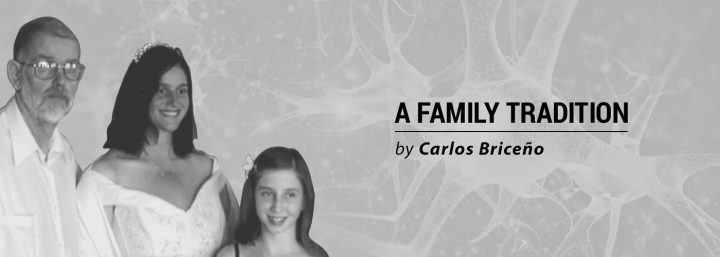Telemedicine Makes Life Easier for Patients
Written by |

Last year, I wrote about the possibility of telemedicine visits for Huntington’s patients with the Huntington’s Disease Society of America’s Center of Excellence in Chicago. My wife, Jill, and I were excited about this possibility because she has “white coat syndrome.”
As someone who has witnessed Jill’s anxiety, both before and during a visit with the doctor, I can say that seeing a medical professional online would be like winning the lottery for Jill.
Well, guess what — Jill won the lottery, so to speak, several weeks ago. Woo hoo!
She was scheduled to see two doctors, but their office called, wondering if they could switch to a virtual format rather than an in-person visit — cue the heavenly choir of angels. This is like asking whether a cat wants catnip instead of a bath.
Rather than driving an hour to Chicago, finding a parking spot in a cramped indoor parking garage, and watching Jill become increasingly nervous while waiting for the first doctor, we joyfully stayed home with a laptop, raring and ready to go for the video call.
Typically, part of Jill’s visit with a neurologist who specializes in movement disorder involves her following some basic commands so that the doctor can observe whether Jill’s movements are changing and becoming less coordinated.
Because Huntington’s attacks the nervous system, it causes a loss of muscle control. So, the doctor tracks this progression over months and years. In-person visits mean the doctor touches Jill, who has sensory issues, and the effect of a stranger touching her is like a million nails on chalkboards.
None of this occurred in a virtual environment (cue the angels again).
Jill was calm. She followed all of the doctor’s commands, which included placing one foot in front of the other while walking in a straight line. The doctor also checked for ataxia. Again, because it was a video call, at no point did Jill’s face and neck turn red with anxiety, which normally happens when she’s in the presence of a nurse or doctor.
I was so happy for her. And she was happy that she was able to see the doctor without really having to see the doctor.
Her next appointment was with a neuropsychologist, and it was equally splendid. After both calls were done, we beamed.
In an era in which video calls are the norm, thank goodness that Jill’s doctors are making them available for patients who have Huntington’s disease. By doing so, Jill will look forward to appointments rather than dreading them.
Telemedicine isn’t a cure for Huntington’s, but it’s definitely helpful.
***
Note: Huntington’s Disease News is strictly a news and information website about the disease. It does not provide medical advice, diagnosis, or treatment. This content is not intended to be a substitute for professional medical advice, diagnosis, or treatment. Always seek the advice of your physician or other qualified health provider with any questions you may have regarding a medical condition. Never disregard professional medical advice or delay in seeking it because of something you have read on this website. The opinions expressed in this column are not those of Huntington’s Disease News or its parent company, Bionews, and are intended to spark discussion about issues pertaining to Huntington’s disease.






Leave a comment
Fill in the required fields to post. Your email address will not be published.